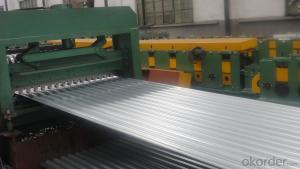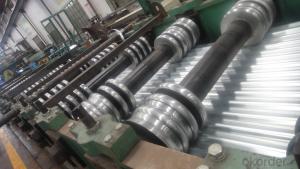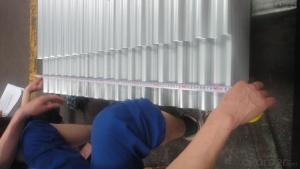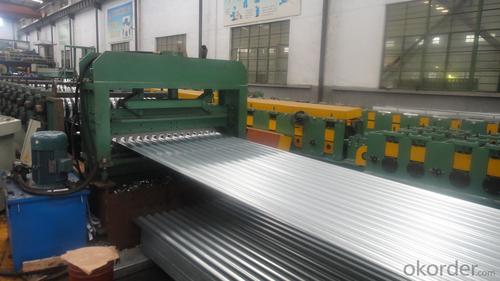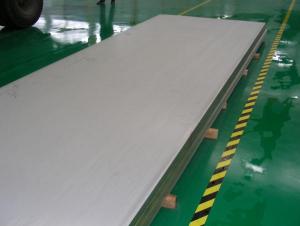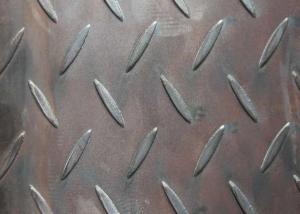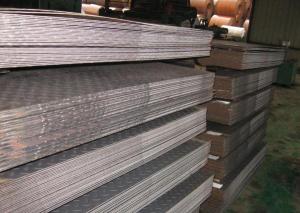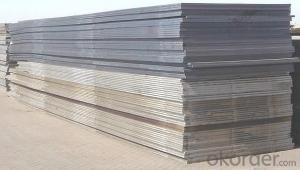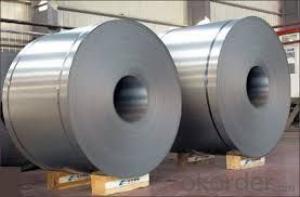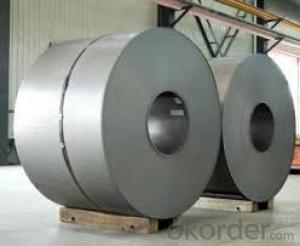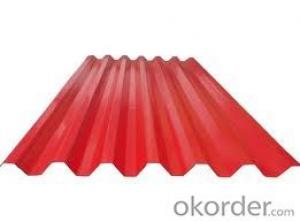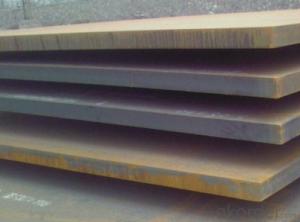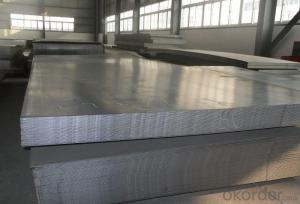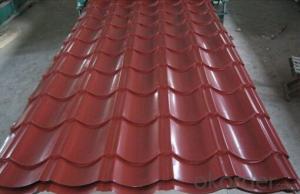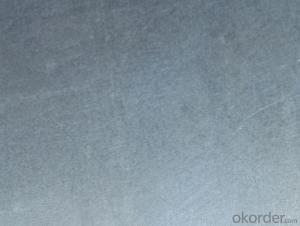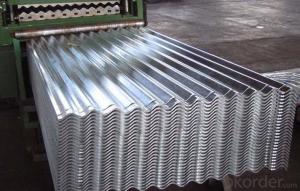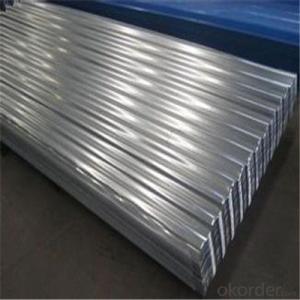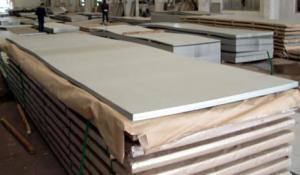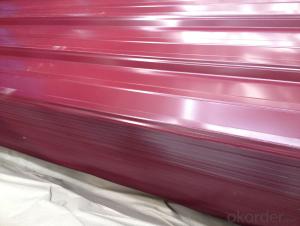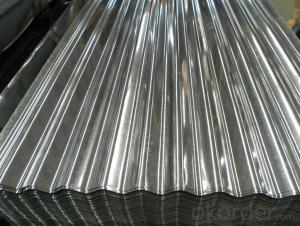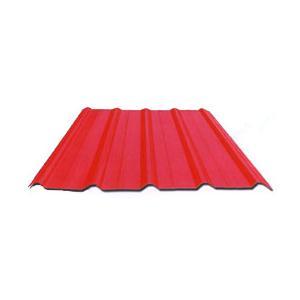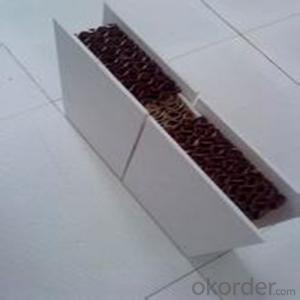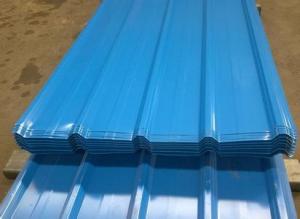0.12-1.2mm galvanized sheet price metal roofing material galvanized corrugated iron sheet
- Loading Port:
- Shanghai
- Payment Terms:
- TT OR LC
- Min Order Qty:
- 10 m.t.
- Supply Capability:
- 100000 m.t./month
OKorder Service Pledge
Quality Product, Order Online Tracking, Timely Delivery
OKorder Financial Service
Credit Rating, Credit Services, Credit Purchasing
You Might Also Like
0.12-1.2mm galvanized sheet price metal roofing material galvanized corrugated iron sheet
1> thickness: 0.12mm - 4.5mm
2> width:762mm/914mm/1200mm
3> length:Any length
4> basic material: Galvanized steel sheet, Aluzinc coated steel sheet, Aluminum steel sheet, Prepainted galvanized steel sheet, Prepainted aluzinc steel sheet
5> Zinc (Al) coating: 40g/m2 - 270g/m2
6> shape: corrugated/ trapezoid/Glazed
7> mainly usage: roof and wall
8> Package: standard export package or as customer's requirement
- Q: Can the steel sheets be used for magnetic shielding?
- Yes, steel sheets can be used for magnetic shielding due to their high magnetic permeability, which helps to redirect and absorb magnetic fields.
- Q: Can steel sheets be used in architectural or decorative applications?
- Certainly, architectural or decorative applications can indeed make use of steel sheets. Steel, as a material, is known for its versatility and durability, providing numerous advantages for both structural and aesthetic purposes. In terms of architecture, steel sheets can serve purposes like roofing, wall cladding, and structural framing, ensuring strength, stability, and resilience against harsh weather conditions. Moreover, architects and designers can fashion steel sheets into various shapes, sizes, and finishes, enabling them to create distinctive and visually appealing structures. When it comes to decoration, steel sheets can be employed for interior and exterior design elements, such as decorative panels, screens, railings, and sculptures. The opportunity to personalize steel sheets with diverse patterns, textures, and colors makes them a popular choice for enhancing the visual allure of buildings and spaces. All in all, steel sheets are an adaptable material suitable for a wide range of architectural and decorative uses, offering both functionality and aesthetics.
- Q: Can the steel sheets be used for kitchen countertops?
- Kitchen countertops can indeed be made from steel sheets. Steel proves itself as a durable and enduring material, capable of withstanding high temperatures, rendering it fitting for kitchen purposes. Moreover, it is resistant to stains, scratches, and water damage, simplifying cleaning and maintenance. Furthermore, steel countertops can lend a sophisticated and contemporary appearance to any kitchen. Nevertheless, it is essential to be mindful that steel is susceptible to scratches and dents, necessitating caution when handling sharp utensils or heavy objects on the countertop.
- Q: What is the average yield strength of steel sheets?
- The specific grade and thickness of steel being used can cause variations in the average yield strength of steel sheets. Typically, the average yield strength of steel sheets falls between 250 and 600 megapascals (MPa). It is worth noting that different steel grades, such as mild steel, high-strength low-alloy (HSLA) steel, or stainless steel, will have different average yield strengths. Furthermore, the yield strength of a steel sheet can be affected by its thickness, with thinner sheets generally having higher yield strengths. Therefore, it is crucial to refer to the manufacturer's specifications or industry guidelines to determine the specific average yield strength for a particular steel sheet.
- Q: How do steel sheets perform in impact resistance?
- Steel sheets have excellent impact resistance due to their high strength and toughness. They are able to absorb and distribute the force exerted during an impact, minimizing deformation and damage.
- Q: What is the thickness tolerance for steel sheets?
- The thickness tolerance for steel sheets typically depends on the specific grade and manufacturing process, but it generally ranges from +/- 0.005 to 0.015 inches.
- Q: How are steel sheets tested for hardness?
- Steel sheets are tested for hardness using various methods, one of the most common being the Rockwell hardness test. In this test, a small indenter, usually a diamond or a hardened steel ball, is pressed into the surface of the steel sheet with a known force. The depth of penetration is measured and converted into a hardness value using a standardized scale. Another method used is the Brinell hardness test, where a hardened steel ball is pressed into the surface of the steel sheet under a specific load. The diameter of the indentation is measured and used to calculate the hardness value. Additionally, there is the Vickers hardness test, which utilizes a pyramid-shaped diamond indenter. The test is similar to the Rockwell test, but instead of measuring the depth of penetration, the test measures the diagonal length of the indentation to determine the hardness value. These hardness tests provide valuable information about the mechanical properties of steel sheets, such as their resistance to deformation and wear. The results of these tests help ensure that the steel sheets meet the required specifications and can be used in various applications where hardness is a critical factor.
- Q: Are steel sheets resistant to mold and mildew?
- Yes, steel sheets are highly resistant to mold and mildew due to their non-porous and smooth surface, making them an excellent choice for areas prone to moisture and humidity.
- Q: Steel plate pile length, adjacent two steel plate pile joints should be staggered what position?
- If the joint in the same position, such as 9+9m then need to stagger joint position,Avoid stress in one position that results in joint fracture and deformation risk.
- Q: Can steel sheets be customized in terms of thickness?
- Yes, steel sheets can be customized in terms of thickness. Steel sheets are manufactured in various thicknesses to cater to different applications and requirements. The thickness of a steel sheet can be customized during the manufacturing process according to the specific needs of the customer. This customization allows for versatility and flexibility in using steel sheets for a wide range of purposes, from construction and automotive industries to manufacturing and fabrication processes. Customizing the thickness of steel sheets ensures that they meet the specific strength, durability, and structural requirements of the project at hand.
Send your message to us
0.12-1.2mm galvanized sheet price metal roofing material galvanized corrugated iron sheet
- Loading Port:
- Shanghai
- Payment Terms:
- TT OR LC
- Min Order Qty:
- 10 m.t.
- Supply Capability:
- 100000 m.t./month
OKorder Service Pledge
Quality Product, Order Online Tracking, Timely Delivery
OKorder Financial Service
Credit Rating, Credit Services, Credit Purchasing
Similar products
Hot products
Hot Searches
Related keywords

